How to deal with mealybugs on indoor plants?
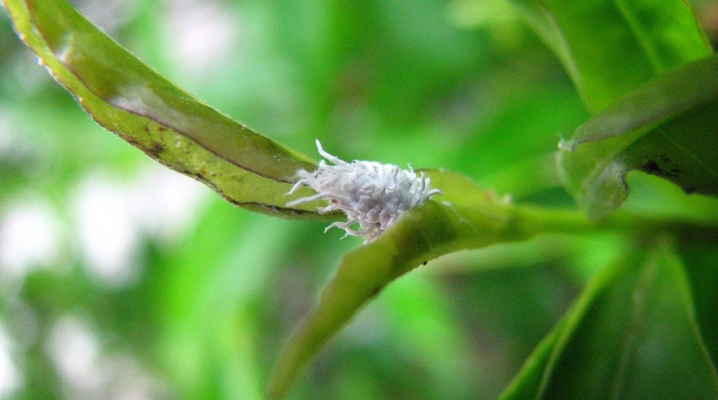
The worm is a parasitic insect from the order of coccidia. This pest is dangerous for the vast majority of domestic plants. In this article, we will take a closer look at where it comes from, talk about the methods of fighting the parasite and introduce you to the rules of effective prevention.
What does a mealybug look like?
In everyday life, mealybugs are better known as "hairy lice". They are a group of sucking parasites visible to the naked eye. They got their name because of the whitish cotton-like waxy discharge. Adults, as well as larvae, parasitize on green tissues of plants and flowers, suck out their vital juices, which leads to a suspension of the growth of the culture and its gradual death.
Certain varieties of the worm can also infect the roots.
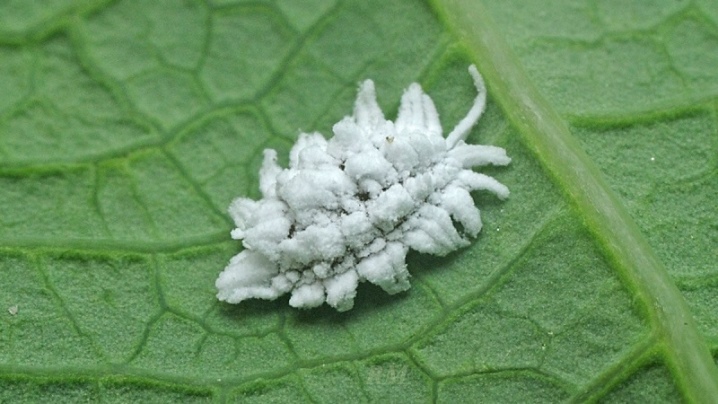
These insects are quite mobile and extremely active, depending on the species, their dimensions vary from 0.5 to 10-12 mm. From above they are covered with a flour-like bloom, on the sides there are wax plates. In scale insects, sex differences are quite well expressed. So, males have straight wings, their limbs are well developed. Having reached adulthood, males stop feeding, so they do not have a mouth apparatus.
In females, the limbs are reduced or even completely absent, the sucking-type oral apparatus. The vast majority of females reproduce by laying eggs, although some species may be viviparous. Females lay their eggs in a shapeless bag that visually resembles cotton wool. The fertility of these parasites is extremely high - they give from 2 to 5 generations annually, while one female lays from 350 to 800 eggs each time, of which young larvae appear within a week.
First instar larvae move throughout the plant, but as soon as they stick to the food source, immediately lose their mobility. At the end of the molt, the second instar larvae are again looking for suitable areas for feeding, and the matured females are already moving intensively throughout the flower.
It is not difficult to notice that a green pet is affected by a mealybug. These insects can be recognized by cotton wool, sugary secretions and the appearance of a sooty fungus on them.
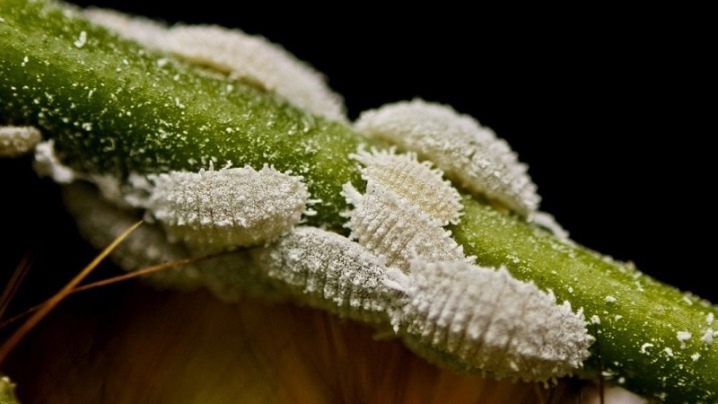
Reasons for the appearance
Among the main reasons that lead to the appearance of a parasitic worm, can be attributed:
- improper care of a green pet;
- the average level of moisture in the room containing the flower;
- violation of irrigation regime - lack or excess of irrigation;
- lack of light.
All these factors create an environment conducive to the reproduction of mealybugs. Low-quality soil can also become a source of damage, therefore, when replanting green pets, it is best to use ready-made soil mixtures that have undergone the necessary disinfection. In addition, there have been cases where a mealybug was found in a newly acquired plant.
To avoid contamination of the rest of the flowers, it is very important that each new pet is quarantined for a couple of weeks.
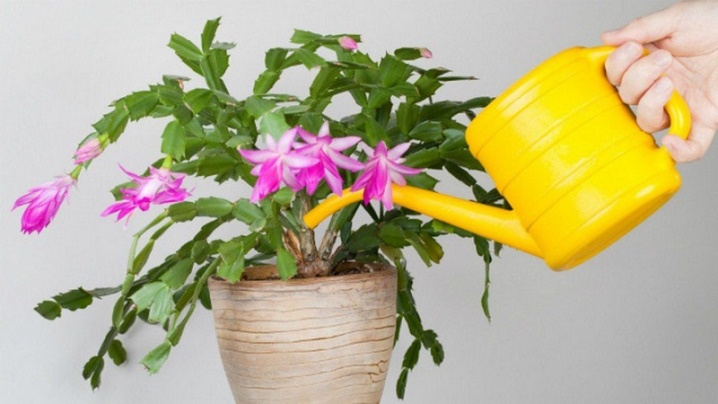
Signs of defeat
The mealybug is an easy-to-see pest. At the very first stage of the disease, the plant looks like it was sprinkled with flour.In the later stages of infection, a sugary waxy coating begins to appear, and the surface of the leaf blades becomes sticky.
Depending on the characteristics of the indoor plant, the worm can manifest itself on its surface in different ways.
- on the leaves of dracaena, it causes the appearance of a whitish sticky bloom, in the absence of quick treatment, the leaves turn yellow, dry and fall off;
- the orchid deforms new shoots and buds;
- in violets, the worm initially infects the roots and only then rises to the green fragments of the flower;
- the sick bearberry resembles a Christmas tree at all - in the axils of the leaf plates, where the growth zone of new shoots is located, you can notice whitish fluffy lumps, over time fungal formations appear on them.
In any case, all processes of growth and development are suspended in a diseased plant, and if a previously weakened flower is affected, it may begin to rot. This course of the disease is due to the fact that the worm carries a bacterial fungus, which causes the green pet to wilt quickly.
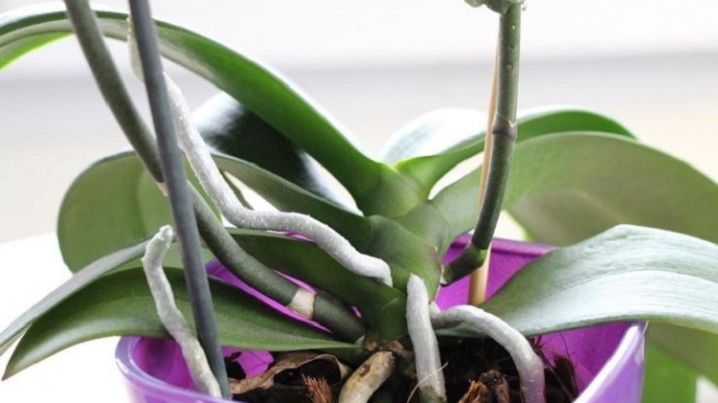
Pest types
Science knows over 1500 varieties of mealybugs. They can be found all over the world, but most often in tropical latitudes. However, among them, a considerable proportion are insect pests that parasitize greenhouse and domestic plants.
The most dangerous for indoor plants include the following.
Bristleworm
The greatest danger is posed by larvae, as well as females. The body of the female is 3-4 mm long, the shape of the body is oval, slightly elongated, the color is pink or light orange, the parasite is covered with a whitish bloom. Usually accumulates on the back of the leaves.
The bristleworm is a very large insect, therefore it can be seen on the flower by its light powder, with which his torso seems to be "strewn", as well as wax-like drops, visually resembling cotton balls. Over time, sooty fungi settle on these secretions. Affected leaves turn yellow rather quickly, further growth and development of young shoots is suspended.
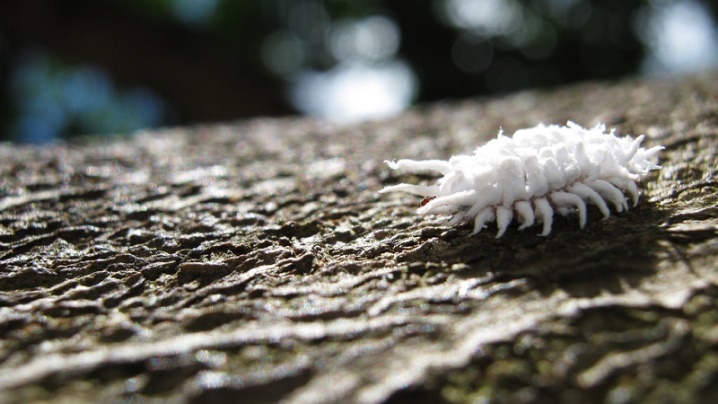
Grapebug
Females of this variety have a rather wide oval body, yellow or pinkish, it is covered with a powder that resembles flour. Larvae of the 1st instar rapidly disperse over all green parts of the flower, forming huge colonies on leaves near the main veins and on new shoots. With significant damage, pests are able to suck out all the juices from a green pet - this, in the shortest possible time, leads to the drying out of the plant and its complete death.
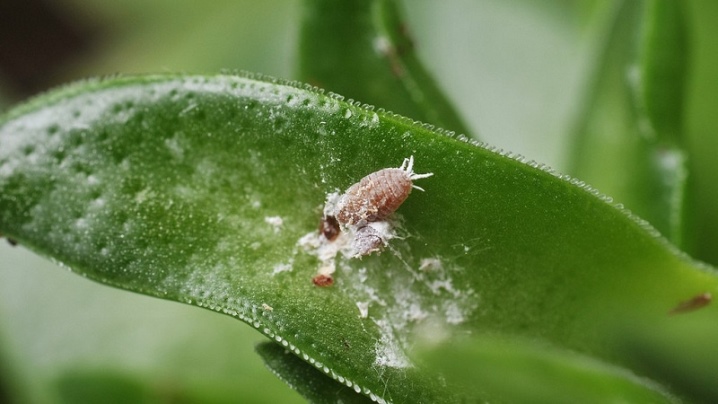
Primorsky scale
It is considered one of the most common. The length of the body of the female reaches 4-5 mm, and the width is 2-2.5 mm, the color is gray-pink with a pronounced flour-like bloom. The larvae are rather small, yellow, completely devoid of powdery plaque, while being extremely active.
They can be easily carried by the wind, and very quickly disperse over the aerial part of the flower. The transformation of a larva into an adult takes about 1-1.5 months, colonies of sooty fungi are formed on the secretions of parasites. The affected plant dries up, its leaves turn yellow, dry and fall off.
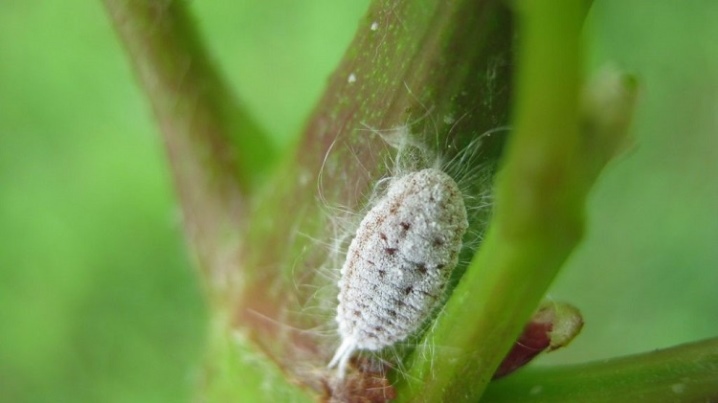
How to get rid of?
If you "caught" the disease at the initial stage, it will not be difficult to deal with it at home. For this you just need to treat the surface of the leaf plates and shoots with a soft sponge dipped in a concentrated solution of laundry soap, and clean off the worm, as well as its cotton-like traces by hand. Then the green pet is treated with infusion of cyclamen, garlic or tobacco broth. Processing is carried out at least 3 times with a frequency of 7-10 days.
The infusion of calendula is also quite effective, you can use alcohol. We pay special attention to the fact that alcohol must be undiluted - in this case, it quickly evaporates from the surface of the sheet and does not harm green tissues. If diluted with water, it will stay on the leaves longer and during this time can cause significant damage to the flower.
With a significant amount of damage, you can use chemicals or proven "grandmother's" recipes.

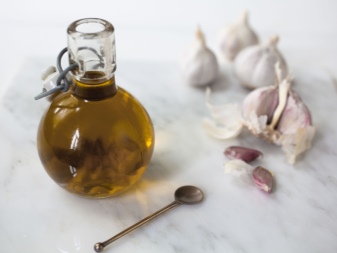
Chemicals
It is advisable to treat the diseased flower with insecticides during the period when the larvae hatch and leave their egg sac - at this stage their body is not yet covered with a layer of wax, therefore they are most vulnerable. However, the main difficulty in fighting the worm is that in the same period several generations of insects are on this plant at once, and a single application of the poison will kill only the youngest individuals, and after a few days they will be replaced by new hatched larvae.
That is why any processing must be carried out at least 3-4 times with a frequency of 7-14 days. Keep in mind - the more the stage of development of the parasite, the more difficult it will be to get rid of the misfortune later. There are many methods of insect control; a wide variety of chemicals are presented on store shelves, which, depending on the characteristics of the impact on the pest, are divided into 3 categories:
- Systemic insecticides. They penetrate the green tissues through the pores and make the sap of indoor plants poisonous. Particularly effective are compositions based on parathion and malathion - "Phosphamide" and "Rogor".
- Intestinal compounds that have the ability to penetrate the insect through the mouth. This includes insecticides Aktara, Aktellik, Nurell-D, Tepeki and Confidor.
- Contact drugs. They penetrate the integument of the parasite. Spruzit-A ESchadlingsfrei is considered the best, its main advantage is the absence of the need for multiple treatments.
Please note that when working with systemic insecticides, it is important to follow the instructions for use of the product exactly. Find out in advance from what distance the liquid should be sprayed in order to avoid harm to the leaves of the plant, also check if you need to use personal protective equipment.
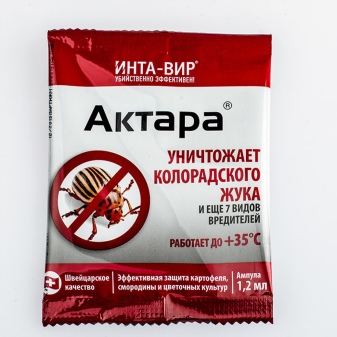
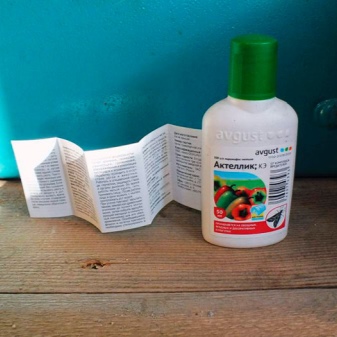
Folk remedies
There are many quite effective "grandmother's" methods of dealing with the parasitic worm. The most popular are the following.
- Horsetail tincture. This herb is sold in every pharmacy, it must be poured with pure alcohol, insisted for 3-5 days, strain and spray the diseased plant from a spray bottle.
- Olive oil. 2 tbsp. l. the oils are dissolved in 1 liter of water, mixed vigorously and the green parts of the plant are treated.
- A very effective tool obtained by mixing 15 g of green liquid soap, 10-15 g of denatured alcohol, as well as 1 liter of water.
- Many growers use a decoction of garlic. To do this, grind 4-6 slices and pour 0.5 liters of water, then bring to a boil and leave for at least 5 hours. The prepared broth is filtered and applied to the leaf plates of the plant with a sponge.

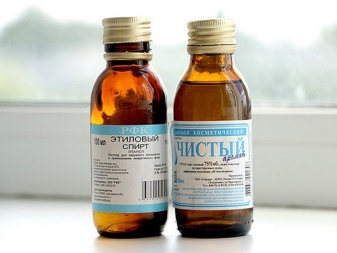
Prevention measures
In order to prevent the appearance of parasitic individuals on green pets, it is important to pay special attention to prevention.
- After buying a new indoor flower for a month, it must be kept in quarantine - during this period it must be kept separate from other plants. If no pathologies are ordered, you can safely transfer him to the room to the rest of the "brothers".
- The room in which houseplants grow should be regularly ventilated. It is important to avoid excessive dryness of the air and excessively high temperatures.
- Periodically it is necessary to carry out preventive spraying with a solution of ordinary laundry soap.
These simple measures should not be neglected. Remember that removing a mealybug is always much harder than preventing a mealybug from emerging.


For information on how to deal with mealybugs on indoor plants, see the next video.































The comment was sent successfully.